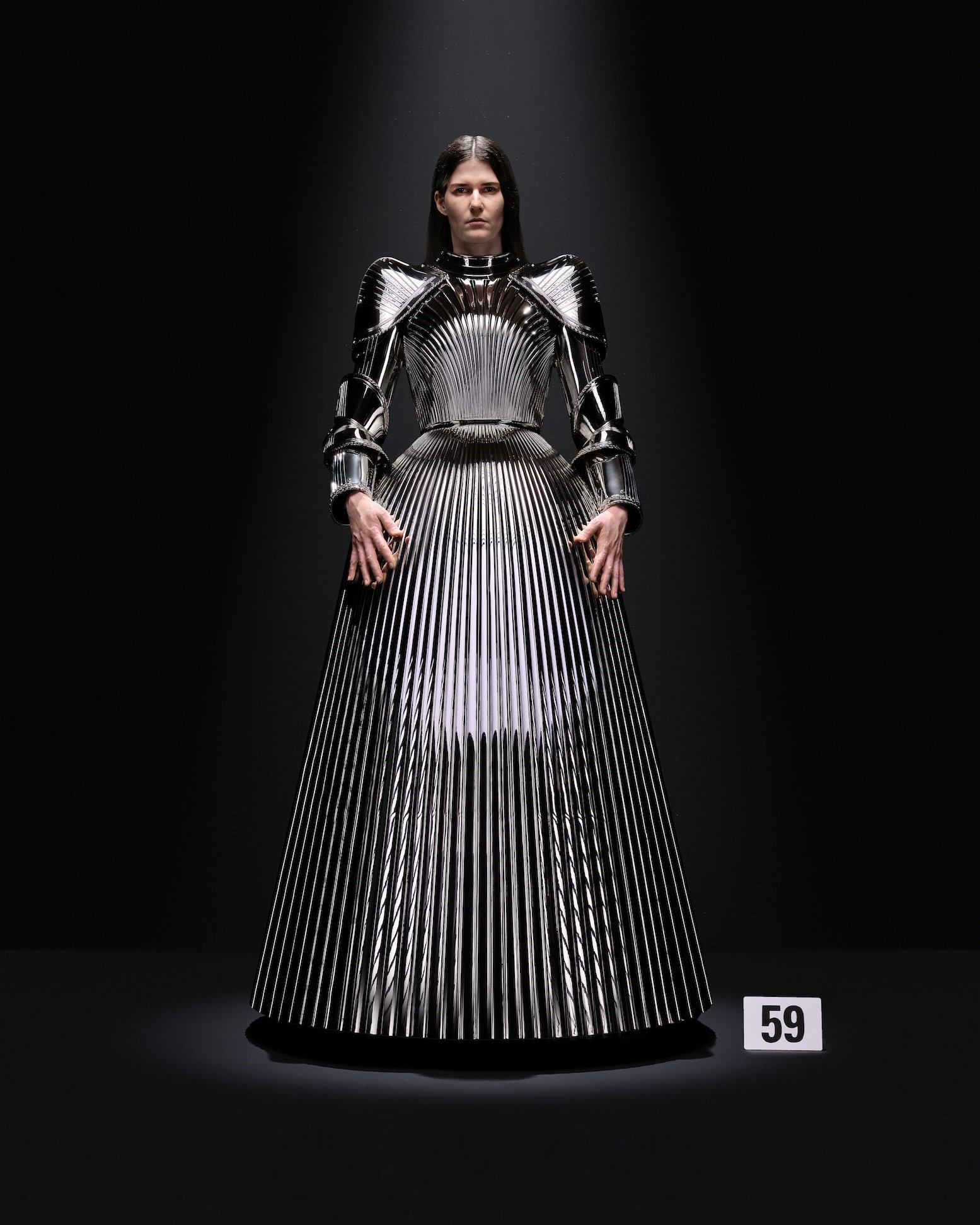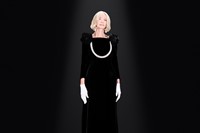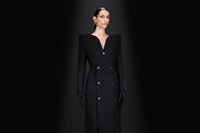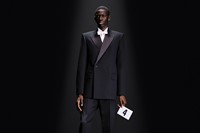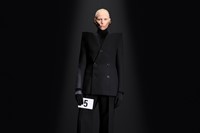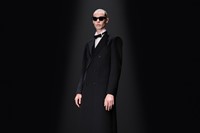If haute couture is often seen today as a space of preservation and conservation of craft, it wasn’t always like that. In the past, couture was the petri dish, what the experimental Italian couturier Elsa Schiaparelli dubbed ‘a laboratory of ideas’ – a space for invention and experimentation through technique. It remains thus for Demna at Balenciaga, whose third haute couture collection for the house – the maison’s 52nd overall – was scored by a reconsideration of Maria Callas. That was curated by the musician BFRND, the original soaring orchestral backgrounds stripped away to isolate Callas’ voice in a cappella, an innovation possible only by using decidedly 21st-century AI. And throughout the show, there was a dance between past and future, between tech and technique, and between modernising tradition and reinventing known histories.
Balenciaga’s history is, of course, well-known. At least, it is to fashion buffs – to general contemporary audiences, especially twenties and under, Balenciaga is synonymous with Demna’s spectacular shake-down of the historic maison, where its founder’s philosophies of fashion are abstracted, applied in manners and to mediums that he could never have anticipated. Then again, Cristobal Balenciaga’s icy vision of perfection was pretty specific – unless you count Mona von Bismarck’s cinnamon-coloured silk gardening clothes, he didn’t really do casual, full stop, let alone a sweatshirt and jeans. Yet I would argue that through his work, Demna has popularised some of the more rarefied aspects of Balenciaga’s heritage – his grand cocoon backs, his swinging sleeves and shrugged-off collars translated to anoraks, cagoule coats and indeed sweatshirts.
In his couture collections, however, Demna hews more closely to Balenciaga’s original ideals. Which is inevitable within the environment of couture, meaning both its ideological structures and the physical space Balenciaga has resurrected at 10 Avenue George V. Those salons now extend above number 11, as they actually did during Cristobal’s era – a sign of the swelling capacity required for fanatics of Demna’s vision of modern couture.
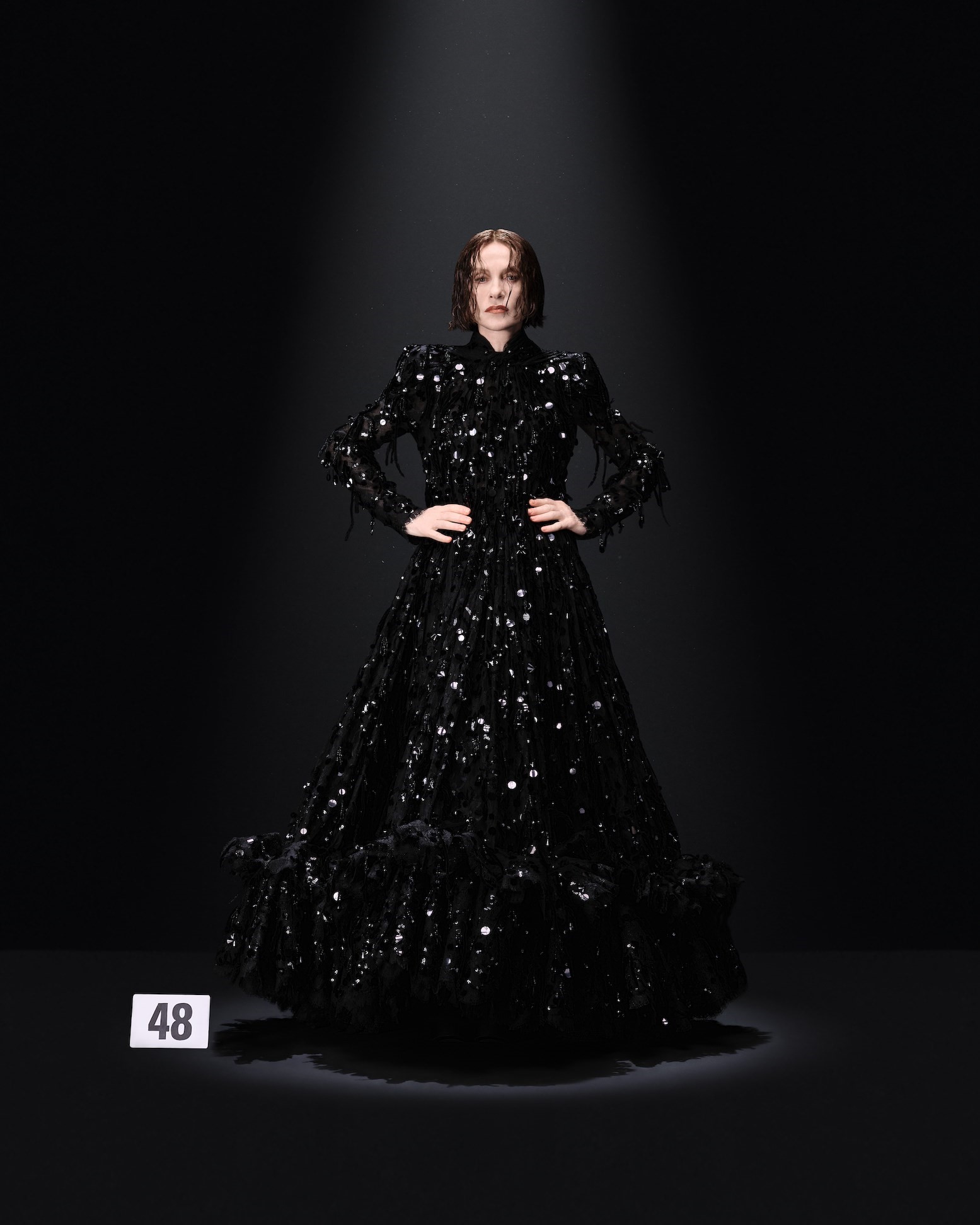
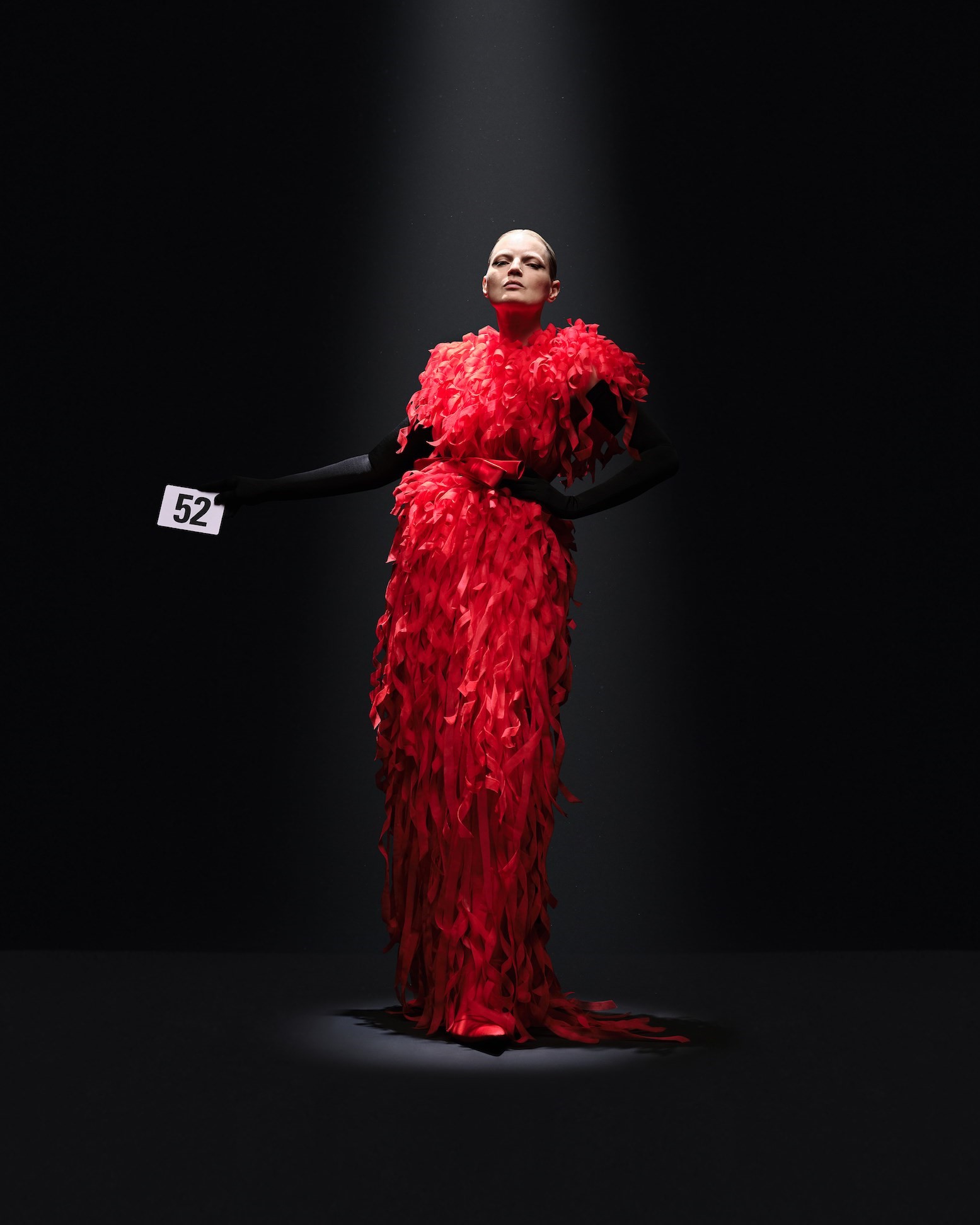
And modern is the word for his couture, fiercely and constantly. Just as Callas’ operatic arias were reconfigured, so were Balenciaga’s operatic clothes, the sculpted daywear and grand evening gowns examined with a new eye. The opening outfit was a literal reinterpretation of an original – a velvet evening gown with integrated pearl lariat from the 1960s in velvet, here worn by Danielle Slavik, one of Cristobal’s cabine from the final four years of his career, who modelled the gown back then. Here, its construction was mirrored, in the same way that Demna’s flared architectural collars, cupping the shoulders like a saucer, were based on the inverted shapes of Balenciaga’s carved-out jacket basques, as photographed by Irving Penn in 1950.
Elsewhere, fabrics were updated: furs and denims, pythons and Prince of Wales checks were created from linens with hand-painted trompe l’oeil treatments, lightening fabrics as well and playing with their value, reducing or increasing as seen fit – although, in essence, a hand-painted imitation fur is worth more than the reality in terms of craft and creativity, and time-spent – up to 280 hours to create some effects.
Eveningwear is, of course, couture’s traditional closer – it's the stuff that conventionally sells, too, stratospherically wealthy women being more willing to part with six figures for a devastatingly elegant evening gown than a cute little suit. Here, the marriage of past and future was perhaps most extreme: taffeta plasticised, chain-mail enlarged and woven, guipure lace engineered into an architecture bell-shaped gown, and dresses 3D printed, a new form of couture. One used the technology to create settings for 10,000 individual crystals; the final gown was CAD-designed and printed to create a modern suit of armour, a galvanised chrome gown flocked with velvet on the inside – the invasion of that old velvet glove comparison, but to the same effect, crafting a modern warrior woman ready to defend or aggress through her dress.
In a sense, clothes are always armour – something we put between ourselves and the world as a protective layer, to reassure and hide our vulnerabilities. It’s an idea as old as time, here given a truly modern twist.
